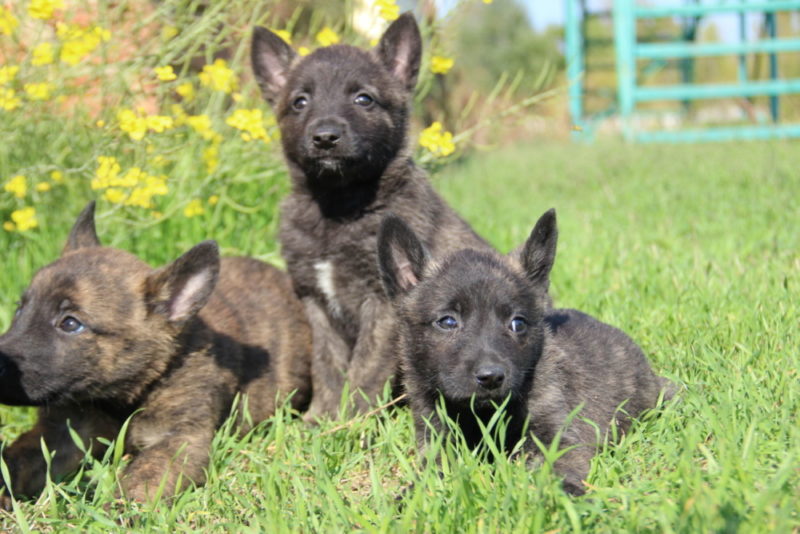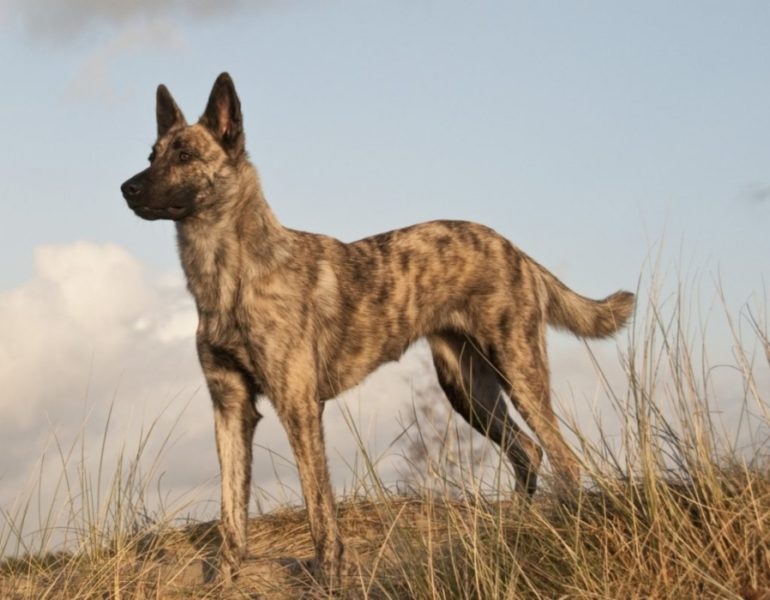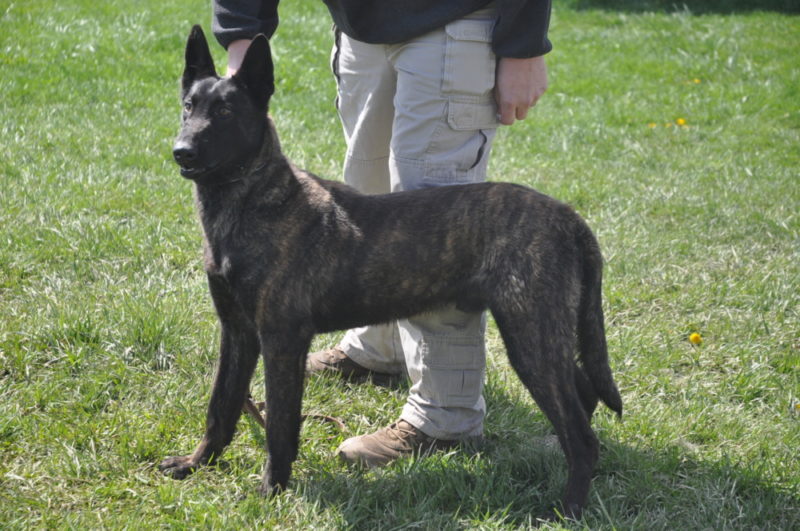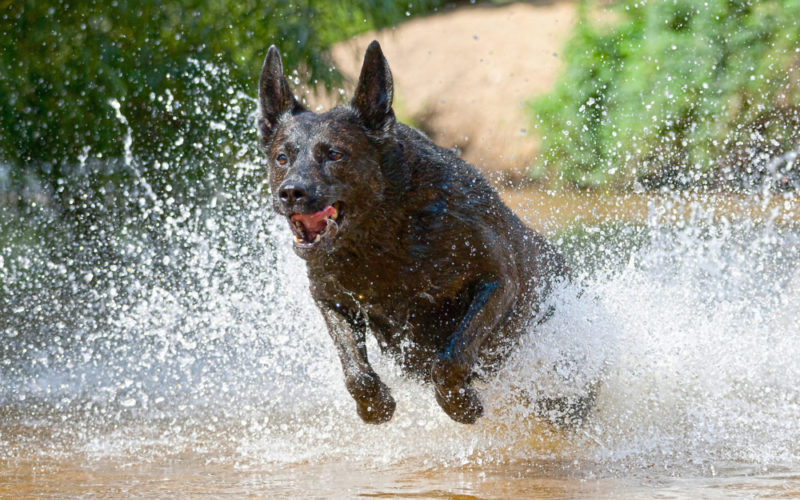An intelligent, strong, loyal Dutch Shepherd belongs to rare breeds of dogs. She has a unique color, excellent performance and good health. Unfortunately, in the modern world, decorative dogs are more in demand, with which you do not need to deal much, train and walk. Herders are not adapted to a calm and measured urban life, full of comfort and safety.
Material Content:
Description and characteristics of the breed
The Dutch herder is originally from the Netherlands, which is sometimes called "Holland". However, such a name is incorrect, since the latter occupies only 2 provinces of the united kingdom. To denote the breed of local shepherd dogs, the adjective "Dutch" has become familiar. These are medium-sized dogs with well-developed muscles, smart eyes and lively temperament. They have an affectionate and obedient disposition. They are vigilant and active, hardy and quick-witted.
There are 3 varieties of Dutch shepherd dogs, characterized by the characteristics of the length and structure of the coat:
- Shorthair - the outer hair is hard with a good undercoat, the hair is longer on the limbs and tail.
- Longhair - the outer hair is long, straight, tight to the body, fairly stiff, with a thick undercoat. The head, ears, hind limbs below the hocks are covered with short hair, tail with long hair.
- Wirecoat - dense coat with a dense undercoat. On the head, the hair is shorter, on the tail - longer.
By nature, the shepherd is very active, she needs movement, play, work, execution of teams. The dog is constantly trying to attract the attention of the owner, including during a walk.
History of the origin of the Dutch Shepherd
The Dutch Shorthair Shepherd is known mainly to the rural inhabitants of the Netherlands, the breed is rarely found outside the country. There is only a small number in neighboring Belgium, France and Switzerland are familiar with herders. In Russia, such dogs are few.
Such magnificent dogs have worked for man for centuries, guarding his herds and housing. According to the requirements of the standard, the breed should not be aggressive towards strangers. These are self-confident, always calm animals, wary of strangers.
Shepherd dogs were known in the Netherlands 300 years ago. The Dutch Shepherd Dog Society appeared around the 60s of the 19th century. The first exhibition with the participation of herders was held in 1874 in the city of Amsterdam, and the first standard was approved in 1898. Since then, it has changed only 2 times.
Life span
These are very healthy dogs, without the genetic diseases characteristic of other breeds. The average life expectancy is 15–16 years. To maintain activity and better health for the entire period of the dog’s existence, it is necessary to provide good nutrition, great physical and mental stress. And also annual deworming, vaccination and treatment of wool against parasites should be carried out. The first vaccinations are given to puppies at the age of about 3 months.
Dog's purpose
The original purpose of the breed was to help the shepherds in grazing and protecting them from predatory animals. With the help of a loud bark, the herders warned the owners of the danger. Responsible dogs did an excellent job with any job entrusted to them.
Today, the Dutch shepherd is a small and rare breed, about 300 puppies are born in the world per year. Dogs are used in the police service to protect property and livestock in the countryside. The breed is distinguished by great diligence and endurance. In the southern regions of the Netherlands, herders still graze herds of domestic animals, sometimes working as guide dogs.
Breed standard and puppy selection
The presented dogs are quite large, at the withers they can reach 60 cm, while very light - they weigh no more than 26 kg. The length of the body is greater than the height at the withers. The breed standard is the same for representatives with different types of coat.
Description of the breed:
- wedge-shaped head when viewed from above;
- muzzle line straight, parallel to the top line of the skull;
- black nose;
- muzzle slightly longer than skull;
- scissor bite;
- eyes are dark, almond-shaped, medium size;
- ears are small, set high, pointing forward when the dog is alert;
- neck of medium length;
- the back is strong, short and straight;
- chest is deep;
- tail at rest lowered and slightly curved, gracefully raised upward when moving;
- limbs strong and muscular, with strong bones;
- paws neat, small, convex, with black claws;
- movements are light, energetic;
- the height at the withers of males is from 57 to 62 cm, bitches are slightly smaller - 55-60 cm.
Serious disadvantages include incorrect coat color: white spots or stripes. Do not stop the ears and tail of the animal. Cowardice or aggression in character can also cause disqualification at an exhibition.
Dutch Shepherd puppies are born black, over time the hue and pattern changes - yellow stripes are added, which form an intricate and beautiful pattern. Solid black color in adult animals is not allowed, the final color of the coat is formed by 1.5–2 years. The Dutch Herder can take part in competitions from 27 months.
To buy a puppy of such a shepherd, you have to go on a trip to the Netherlands in search of nurseries with a good reputation.A purebred dog can also be purchased in Belgium or France.
Maintenance, care and feeding
Dogs are best kept in a country house. Only not on a chain, but in an aviary or in one of the rooms with the ability to freely enter the fenced yard. With shepherd dogs you must constantly arrange walks and certainly talk, as they are extremely in need of communication with a person. To maintain a good working form should arrange constant training, sports or games. It is important to monitor the appearance of the pet, bathe several times a year, comb, wipe the ears with a special lotion.
Dogs molt in autumn and spring. To maintain a beautiful and well-groomed appearance, the “fur coat” of the Dutch long-haired shepherd is combed or stiffened several times a week. Hard and shorthair shepherd dogs also need care. During molting, there is less concern with them, but it is advisable to regularly remove dead hair so that the animals have a neat appearance. Throughout the warm season, preventive measures against fleas and ticks are carried out, which is especially important for dogs grazing in meadows.
Dutch Shepherds are not picky about food, they have a great appetite, but they are not prone to overeating. Most often, they are fed natural food at home - meat, porridge, vegetables and sour-milk ingredients. You can teach your puppy to a dry composition by choosing a quality product from a good manufacturer.
Training and education
In Holland, a lot of attention when breeding dogs is paid to their training. The animal should be 100% manageable - move and sit on the command of a specialist, without being distracted by extraneous stimuli. There are very few herders, so the Dutch devote a lot of time and attention to conducting special exercises to preserve the working qualities of the dog inherent in the breed.
For successful training, it is important to find something to interest the dog in. If she really likes to eat, it will be a treat. For a herder shepherd, who is not too interested in food, a toy, for example, a ball, will be an excellent incentive for obedience. The dog just loves to have fun with a ball, sticks. She will protect her favorite thing, take her for a walk, sleep and eat with her.
The only difficulty in training dogs is the fact that they can be aggressive towards other dogs if they are not brought up properly. To facilitate the task of socialization, you need to deal with little puppies, introduce them to other brothers, develop friendliness and sociability.
Pros and Cons of the Dutch Shepherd Dog
This shepherd dog breed has advantages that its owners highly value. She is very smart, obedient and hardy, has good health, and has no hereditary malformations. The dog is devoted to the owner, always ready to protect himself, as well as property belonging to thieves and predators.
Cons of the Dutch shepherd can only find a lazy owner. She feels great when doing work, but is completely unsuitable as a sofa pet. This is a service breed with which you need to deal a lot, load mentally and physically. A dog is more likely to tolerate a lack of food than a lack of movement and attention from an older friend.

















